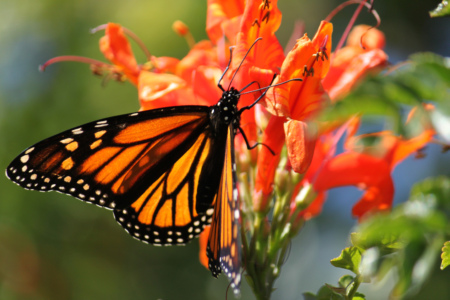A butterfly's life cycle
This task is about understanding a butterfly's life cycle.

Knowing about life cycles helps you to understand one way animals and plants have adapted to survive.
This understanding helps us when we are interested in the survival of a species.
-
Click on the link to the Monarch Butterfly Life Cycle (below). This will take you to another website.
-
Click on the picture. You can then click on the labels to find out about the stages of the life cycle.
-
Read the information for each label.
-
Close the window. (You can return to it if you need to.)
-
Click Next to answer four questions about the butterfly life cycle.


